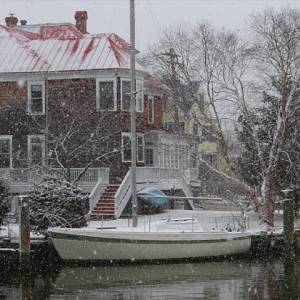
Winterising Your Boat
Winter is almost here...
Although it has been unseasonably mild this October, we are all aware that winter is on the way - I for one have dug out my woolly hat and thermals for frosty dog walks and lifeboat shouts, they sit there in anticipation :)
This is a quick and very basic overview of jobs to consider doing in order to make sure that your boat is safely laid up this winter - best done before using those thermals in anger.
I would be really interested to hear if you have any additional jobs to add or any top tips you would like to share with other Boatshed boaters. If so please email me at fionataylor@boatshed.com and I will post the best of them on our Boatshed.com Facebook page.
Make sure that your boat is clean!
Roll your sleeves up and give your boat a deep clean both internally and externally.
Cleaning your boat will highlight any chipped/damaged gel coat or blisters which could need attention before next season.
Remove the contents of the fridge and freezer and any perishable goods.
Take off any cushions or fabric items including sails and covers that aren't required and store them ashore. Make sure any furling headsail is secured properly and cannot unfurl in a blow.
Remove other Items that might be affected by damp, such as flares and charts.
Consider rigging up a de-humidifier and small (safe) space heater to ward off damp and frost. Try to leave some ventilation, a hatch open a fraction or similar would suffice.
Have all over weatherproofing covers available to protect the deck and cockpit area as much as possible.
Prepare the engine!
If you are winterising your boat's engine yourself, you will need to...
Fill up the fuel tank allowing only a couple of centimeters for expansion. Consider adding a stabilising additive and then running the engine to make sure this is pulled through.
Change the engine oil and refill with fresh - this will prevent any toxins in the used oil damaging the engine over time.
Drain away old coolant, flush with fresh water and refill with new coolant. Make sure that this contains adequate antifreeze.
Loosen all drive belts so that they are not inert and under tension for a long period - preventing cracking.
Grease any steering gear or stern gland - make sure that mechanisms are protected.
Disconnect the battery and make sure that it is fully charged and topped up with water.
If you are leaving your boat in the water...
Ensure the automatic bilge pump is working correctly (if fitted) and that the bilges are clean and free of any rubbish.
Attach shorelines as well as bow and stern lines and springs, rig lines from both port and starboard cleats to shore to prevent chaffing - double up and consider using chain if on a mooring!
Make sure that your boat's hull is adequately fendered and protected.
Arrange for your boat to be checked regularly ( particularly before and after any harsh weather ) both inside and out - if you cannot be sure of doing it yourself.
Lastly, don't forget to let me know via email should you have any good ideas or more tips for keeping your boat in tip-top condition over the winter.
Fiona Taylor - Boatshed HQ Team

